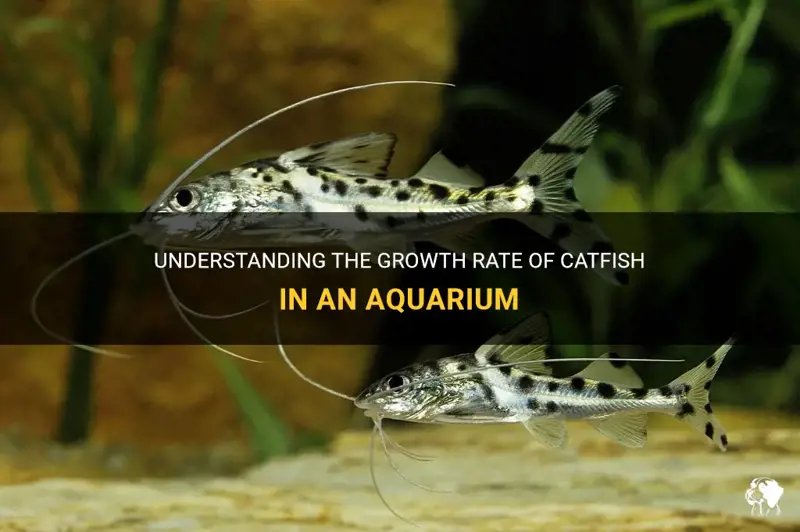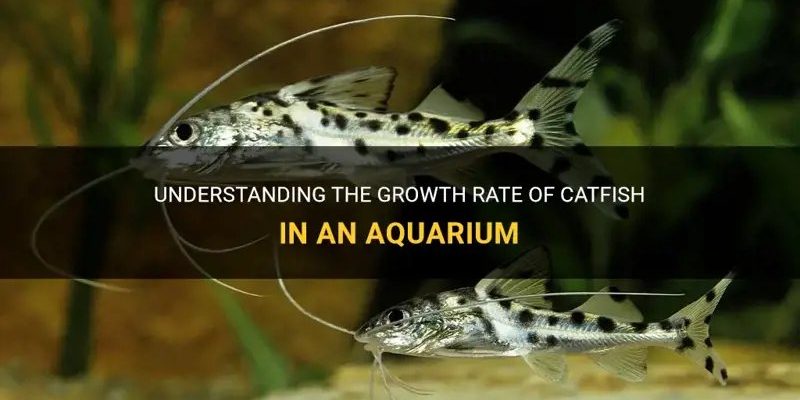
Imagine raising a pet catfish, waiting eagerly as it grows from a tiny fry into a substantial fish. The process can be quite interesting! So, you might be wondering: how quickly do they grow, and how big can they get? Whether you’re a potential catfish owner or just curious about aquatic life, understanding their growth rate is essential for meeting their needs and ensuring their well-being.
Understanding Catfish Growth Rates
Catfish growth rates can be quite impressive, depending on the species. Generally, catfish grow at a steady pace, but several factors can influence their speed. Let’s break down how different species of catfish grow and what you can expect.
When it comes to catfish, there are several popular species you might encounter, including the Channel Catfish, Blue Catfish, and Flathead Catfish. Each of these has its own growth pattern.
– Channel Catfish: These are among the most common and can reach 1-2 pounds in their first year. By the third year, they could grow to about 10 pounds!
– Blue Catfish: Known for being the largest catfish species in North America, they grow slower initially but can reach impressive sizes. They can grow over 30 pounds by the age of 5.
– Flathead Catfish: They tend to grow a bit slower at first but can reach sizes similar to Blue Catfish over time. It’s not unusual for them to weigh over 50 pounds in the right conditions.
Each of these species thrives in different environments and has unique dietary needs, which can all influence how quickly they grow.
Factors Affecting Growth Rates
You might be wondering what affects how fast catfish grow. Interestingly, several elements come into play. Let’s take a closer look at those factors.
The environment where catfish live can significantly impact their growth rates. Water quality, temperature, and availability of food are crucial. For example, catfish in warmer waters tend to grow faster than those in colder waters. Similarly, if the water is clean and well-oxygenated, catfish will thrive.
– Water temperature: Ideal temperatures for catfish growth are typically between 75°F and 85°F. If the water is too cold or too warm, their metabolism slows down, affecting growth.
– Food availability: A well-balanced diet will support faster growth. Catfish are opportunistic feeders and will eat various foods like pellets, live bait, and plant materials.
Providing a stable, healthy environment will help your catfish reach their full growth potential.
Feeding Habits That Promote Growth
Let’s talk about what catfish eat. Their diet plays a significant role in how fast they grow. If you’re raising catfish, knowing what to feed them is key.
Catfish are primarily carnivorous, but they’re also known to eat plant materials. A good diet for catfish includes:
– High-quality pellets: These provide essential nutrients and will encourage steady growth.
– Live food: Things like worms or minnows can stimulate growth and mimic their natural feeding habits.
– Vegetation: Offering some plant matter can also benefit their digestive health.
Feeding them the right balance of these foods helps ensure that they grow strong and healthy. Remember, overfeeding can lead to poor water quality, so it’s essential to maintain a balance.
Measuring Growth: What’s Normal?
One of the most common questions among catfish owners is, “How do I know if my catfish is growing as it should?” It’s vital to track their growth to ensure they’re thriving.
You can measure the growth of your catfish by:
1. Weighing and measuring: Regularly take measurements of their length and weight to see how they’re growing over time.
2. Observing behavior: Healthy catfish are active and curious. If they appear lethargic or stop eating, it might be a sign that something’s off.
Generally, if you’re raising Channel Catfish, you can expect them to grow about 1-2 pounds each year for the first few years. Blue Catfish, however, might take several more years to reach larger sizes, especially if they’re in less than ideal conditions.
The Importance of Space
The amount of space you provide can greatly affect the growth of catfish. When you think about it, confined spaces can lead to stress and stunted growth, similar to how overcrowding can impact any living creature.
If you’re raising catfish in a tank or pond, here are some guidelines:
– For Channel Catfish, a common recommendation is about 10 gallons of water per fish. This allows enough room to grow and swim freely.
– For Blue Catfish, which grow larger, you’ll need more space—around 20 gallons per fish is ideal.
Giving them plenty of room can help ensure they grow at their optimal rate.
Final Thoughts on Catfish Growth
Understanding how fast catfish grow is essential for anyone interested in maintaining these fascinating creatures. Their growth rates can vary widely, influenced by their species, environment, diet, and available space.
By providing a healthy habitat with the right conditions, you can help your catfish reach their full potential. Whether you’re just starting out or have been keeping catfish for a while, remember that patience is key. It might take time to see significant growth, but with the right care, you’ll be rewarded with healthy, thriving fish.
Catfish are not just fascinating to observe; they also teach us about the balance of nature and the importance of proper care. Happy fish keeping!

